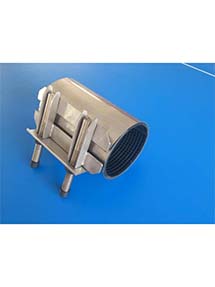butterfly valve air actuator
Understanding Butterfly Valve Air Actuators Functionality and Applications
Butterfly valves are widely used in various industrial applications due to their lightweight design, space efficiency, and ability to handle large volumes of fluid with minimal pressure drop. At the heart of many butterfly valve systems lies the air actuator, a device that plays a crucial role in the automation and control of valve operations.
Air actuators utilize compressed air to open or close the butterfly valve. The operation is typically categorized into two types double-acting and spring-return actuators. In double-acting actuators, air pressure is applied to both sides of the actuator, allowing for precise control in both the opening and closing of the valve. This design is particularly beneficial in applications requiring continuous modulation or rapid on-off operation. Conversely, spring-return actuators use a spring mechanism to return the valve to its default position—often closed—when the air supply is interrupted. This feature enhances safety by ensuring that the valve fails in a predetermined state.
The construction of air actuators generally includes a housing, a piston, and a spring mechanism. The actuator’s design permits a compact form factor, making it suitable for installations where space is limited. The materials used in constructing these actuators are robust and can withstand harsh environmental conditions, including high temperatures and corrosive substances, making them ideal for chemical processing, water treatment, and HVAC systems.
butterfly valve air actuator

One of the primary advantages of using air actuators in conjunction with butterfly valves is the speed of operation. Unlike manual valves, which require physical effort to operate, air actuators can quickly adjust flow rates, improving overall system efficiency. This rapid response is crucial in processes where precise control of fluid flow is necessary to maintain safety and operational integrity.
Additionally, the automation capabilities provided by air actuators allow for integration with control systems, enabling remote monitoring and operation. This increases the flexibility of the system and reduces human error, as operators can manage valve positions from a distance. In modern industrial setups that prioritize efficiency and automation, air actuators contribute significantly to operational reliability and effectiveness.
Maintenance of butterfly valve air actuators is relatively straightforward. Regular inspection and servicing ensure that the actuators continue to function optimally. Maintenance tasks include checking for leaks in the air supply, inspecting seals and gaskets, and ensuring that the actuator moves freely without obstruction. By adhering to a basic maintenance schedule, operators can prolong the life of their actuator systems and avoid unexpected downtimes.
In conclusion, butterfly valve air actuators are essential components in many industrial applications, offering a blend of efficiency, safety, and operational simplicity. Their ability to automate valve control not only enhances performance but also contributes to the overall safety of industrial processes. As industries continue to evolve towards more automated and efficient operations, the importance of integrating reliable air actuators with butterfly valves will only become more pronounced, paving the way for innovative advancements in fluid control technologies.
-
The Smarter Choice for Pedestrian AreasNewsJun.30,2025
-
The Gold Standard in Round Drain CoversNewsJun.30,2025
-
The Gold Standard in Manhole Cover SystemsNewsJun.30,2025
-
Superior Drainage Solutions with Premium Gully GratesNewsJun.30,2025
-
Superior Drainage Solutions for Global InfrastructureNewsJun.30,2025
-
Square Manhole Solutions for Modern InfrastructureNewsJun.30,2025
-
Premium Manhole Covers for Modern InfrastructureNewsJun.30,2025
